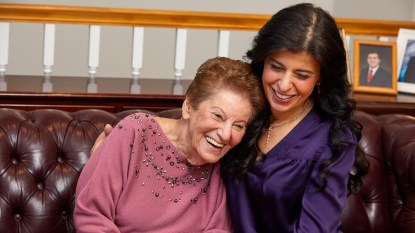This 5-Minute Mindfulness Meditation Will Break Your Worry Cycle
It's perfect for beginners or anyone wanting to come into open awareness before starting another practice

This core practice can be used as a first step for any meditations to help you relax and open into awareness. Here we use the breath as an anchor, but you can also use touch or sounds, whatever works best for you in this 5-minute mindfulness meditation practice.
Step 1: Allow tension to fall away
Settle into a comfortable position with an upright, relaxed posture. Eyes may be closed, or open with a soft downward gaze. Take a few slow, deep breaths. Gently scan your body for areas of tension, paying attention to the areas around your eyes, jaw, shoulders, belly. Softening. Relaxing. Now, begin to notice the sounds around you. Be aware of their beginnings and endings, and of the space between sounds. Open to include distant sounds. Sense how everything you perceive — sensations, sounds — arises and passes away.
Step 2: Fall into your breathing
Bring attention to your breathing, focusing on the place where you feel it most vividly. It may be felt at the upper lip and nostrils as a coolness or tingling as air comes in, a warmth or flow as air moves out. It may be felt in the back of the throat as a swirling or tingling. It may be felt in the chest or the belly as a rising and falling. Focus your attention where the breath is most noticeable. Try to keep your attention on the breath, noticing all the changing sensations. If you discover that your awareness has moved away from the breath, notice that this has happened without judging it. Notice where the attention went to, and gently bring it back to that place in the body where the breath is most vivid. Each moment of returning to the breath is a moment of returning to presence. You may come back to the breath a hundred times. Each time you notice that your mind has wandered is a moment of mindful awareness.
Step 3: Notice what arises
From here, begin to widen your attention to include other waves of experience that arise — sounds in the environment, sensations in the body, feelings and thoughts. Notice if any particular experience is drawing your attention. If so, allow the breath to recede to the background and bring an interested, kind presence to this experience. It can be helpful to name what is noticed, just with a whisper. For example, sensations in the body may be felt as heat, pressure, tightness, coolness, tingling. Feelings might arise such as frustration, fear, tenderness or delight. Thoughts may come in the form of images or words. With a soft, open awareness, sense the experience as it is. As you fully attend to this wave, notice how it changes, becoming more intense or dissipates. If judgment toward the process arises, let it pass away like a cloud in the sky.
Step 4: Feel yourself held in loving awareness
When what you’re observing is no longer a strong experience, return to the mindfulness of breathing. Allow these waves of experience to arise and pass away, as you are held within a larger loving awareness, centered, present and open.
Bonus: Letting go of stress is a smart way to boost your energy. Click through to learn how a mindfulness meditation can heal your adrenals to erase fatigue and brain fog.
For audio recordings of select mindfulness meditation practices, please visit Dr. Ferretti’s website Present Heart.
For an introduction to loving-kindness meditation from our sister magazine:
Try Loving-Kindness Meditation To Increase Compassion, Positivity, and Self-Love
For more guided meditations from Dr. Ferretti:
Deeply Disappointed? This Meditation Will Help You Rediscover Peace and Happiness
This Simple Meditation Exercise Can Help You Let Go of Rage and Find Inner Peace
Are You Suppressing Your Emotions Due to Stress? This Calming Meditation Script Will Help
Feeling Helpless and Alone? Here’s How to Open Your Heart to Gratitude

Dr. Louise Ferretti is a clinical neuropsychologist serving children and families in western New York. She has been exploring mindfulness and heart-opening practices for over 20 years, with experience in Vipassana and Tibetan meditation traditions. She recently completed the Mindfulness Meditation Teacher Certification Program developed by Jack Kornfield and Tara Brach. She has taught mindfulness to children living with mental health challenges, and offered heart-opening practices in faith communities seeking a deeper contemplation on love. She’s also Chief Editor of the magazine Kindfulness.
This article originally appeared in our print magazine, Kindfulness (Buy on Amazon, $12.99).













